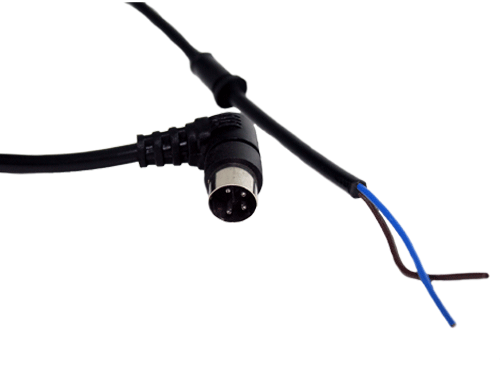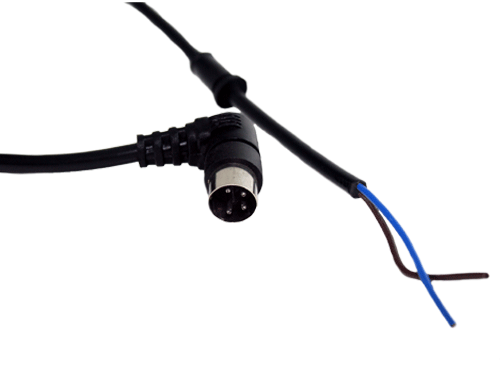
Si el cable del actuador actual no es lo suficientemente largo, puede comprar un cable más largo para alcanzar la longitud deseada. Este cable del actuador tiene 2 pies de largo y se adapta a todos los modelos de actuador excepto al actuador lineal de servicio pesado PA-17. El cable tiene un conector de 4 pines para enchufarlo a las cajas de control PA-20, PA-22 y PA-24 de Progressive Automations.
OPCIONES PERSONALIZADAS
¿Busca un actuador pero las especificaciones no coinciden exactamente con lo que necesita? Contamos con una extensa lista de capacidades de personalización para garantizar que obtenga exactamente lo que necesita para su proyecto. Descargue la hoja de datos de este producto y descubra más sobre sus opciones de personalización.
Si el cable del actuador actual no es lo suficientemente largo, puede comprar un cable más largo para alcanzar la longitud deseada. Este cable del actuador tiene 2 pies de largo y se adapta a todos los modelos de actuador excepto al actuador lineal de servicio pesado PA-17. El cable tiene un conector de 4 pines para enchufarlo a las cajas de control PA-20, PA-22 y PA-24 de Progressive Automations.
OPCIONES PERSONALIZADAS
¿Busca un actuador pero las especificaciones no coinciden exactamente con lo que necesita? Contamos con una extensa lista de capacidades de personalización para garantizar que obtenga exactamente lo que necesita para su proyecto. Descargue la hoja de datos de este producto y descubra más sobre sus opciones de personalización.
Según tu aplicación, hay diferentes requisitos de especificaciones que debes considerar al determinar el actuador lineal que necesitas. Estos requisitos incluyen fuerza, carrera, velocidad y dimensiones de montaje. Para información detallada del actuador, puedes consultar la hoja de datos o la tabla de especificaciones ubicada en la página del producto del actuador seleccionado. También puedes comunicarte con nosotros para hablar con uno de nuestros ingenieros expertos.
Ciclo de trabajo es la fracción del período de trabajo durante la cual un actuador lineal puede permanecer activo. Puede calcular el ciclo de trabajo de un actuador lineal con la siguiente ecuación: Ciclo de trabajo (%) = (Tiempo que el actuador lineal está activo) / (Tiempo de un período de trabajo)
Por ejemplo: con un ciclo de trabajo del 25%, un actuador puede funcionar durante 5 minutos de forma continua y luego debe descansar 15 minutos antes de volver a operar.
Carrera es la distancia de recorrido de la varilla extensible. Para determinar la longitud de carrera que necesita, mida su aplicación desde la posición totalmente retraída hasta la posición totalmente extendida. La diferencia será igual a la longitud de carrera necesaria.
Siempre recomendamos comprar un actuador con una fuerza nominal superior a la que requiere la aplicación. Si no está seguro de sus requisitos de fuerza, este artículo puede ayudarle a calcularla: Cómo calcular la fuerza para encontrar el actuador lineal adecuado
Sí, es posible. Sin embargo, depende de las unidades que esté usando actualmente. Para sincronizar actuadores, necesitan algún tipo de retroalimentación, como un potenciómetro o sensores de efecto Hall. Para más información, a continuación encontrará algunos de nuestros contenidos clave sobre la sincronización de actuadores lineales.
La caja de control que elija debe ser capaz de proporcionar a su actuador un voltaje y una corriente nominales suficientes. Si no está seguro de las especificaciones, por favor contáctenos.
Como alternativa, también puede encontrar cajas de control compatibles en la página del producto del actuador lineal que haya seleccionado.
La marcha atrás se produce cuando un actuador comienza a deslizarse hacia abajo bajo carga, cuando está sobrecargado o cuando el actuador ha resultado dañado. Ver el vídeo.
¿Qué significan las capacidades de carga dinámica y estática?La capacidad de carga dinámica es la cantidad de peso que un actuador puede tirar o empujar de forma segura cuando está encendido. La capacidad de carga estática es la cantidad de peso que el actuador puede sostener o soportar sin retroceder cuando no está recibiendo alimentación. Por ejemplo, digamos que tiene un actuador instalado en una ventana y la capacidad de carga estática del actuador es de 100 libras, podría experimentar retroceso cuando hay un evento de viento fuerte, lo que significa que se ejercerá más presión sobre el actuador que lo haría. exceder la capacidad de carga de 100 libras del actuador.
¿Qué es la carga lateral?La carga lateral se produce cuando el actuador experimenta fuerzas desde el plano lateral. Los actuadores no están diseñados para manejar fuerzas laterales en absoluto, por lo que si experimentan fuerzas laterales, es probable que dañen el actuador o doblen la varilla. Por lo tanto, se recomienda nunca utilizar fuerzas laterales y asegurarse siempre de que el actuador esté completamente alineado o sincronizado con su aplicación, de modo que no admita ninguna carga que no sea la carga axial. Ver el vídeo.
